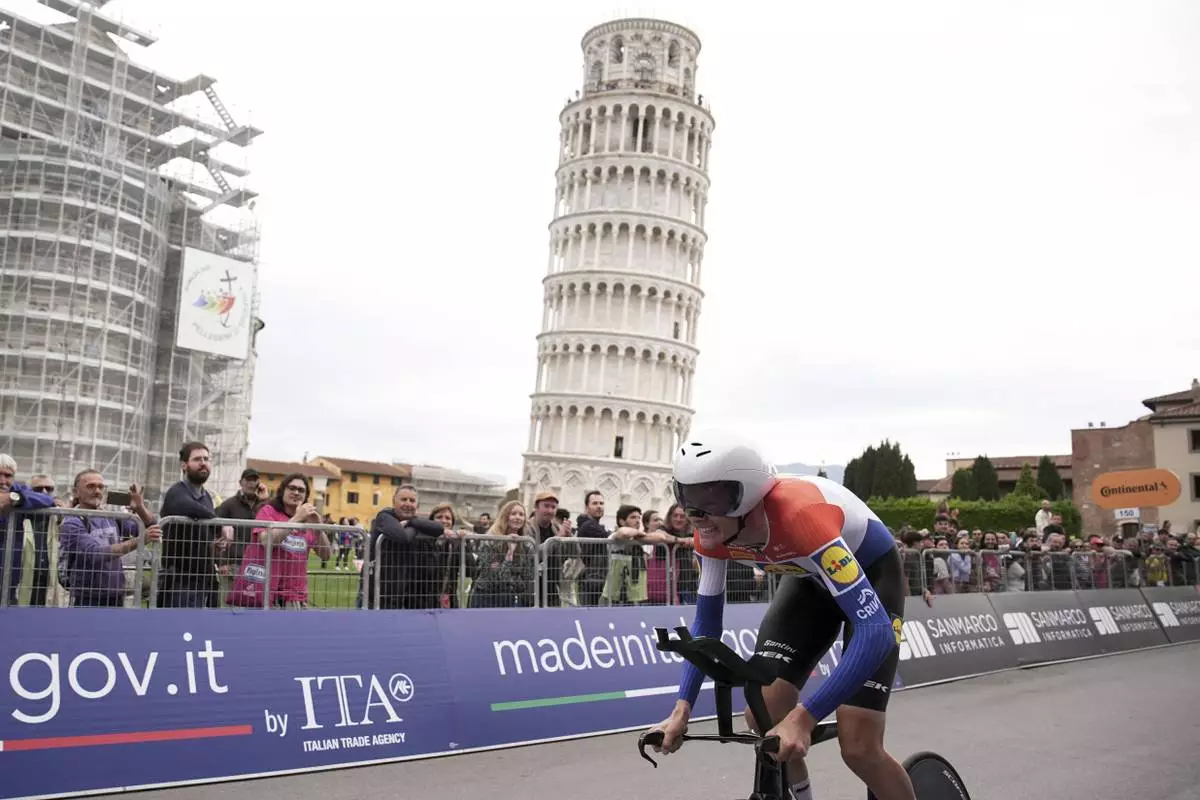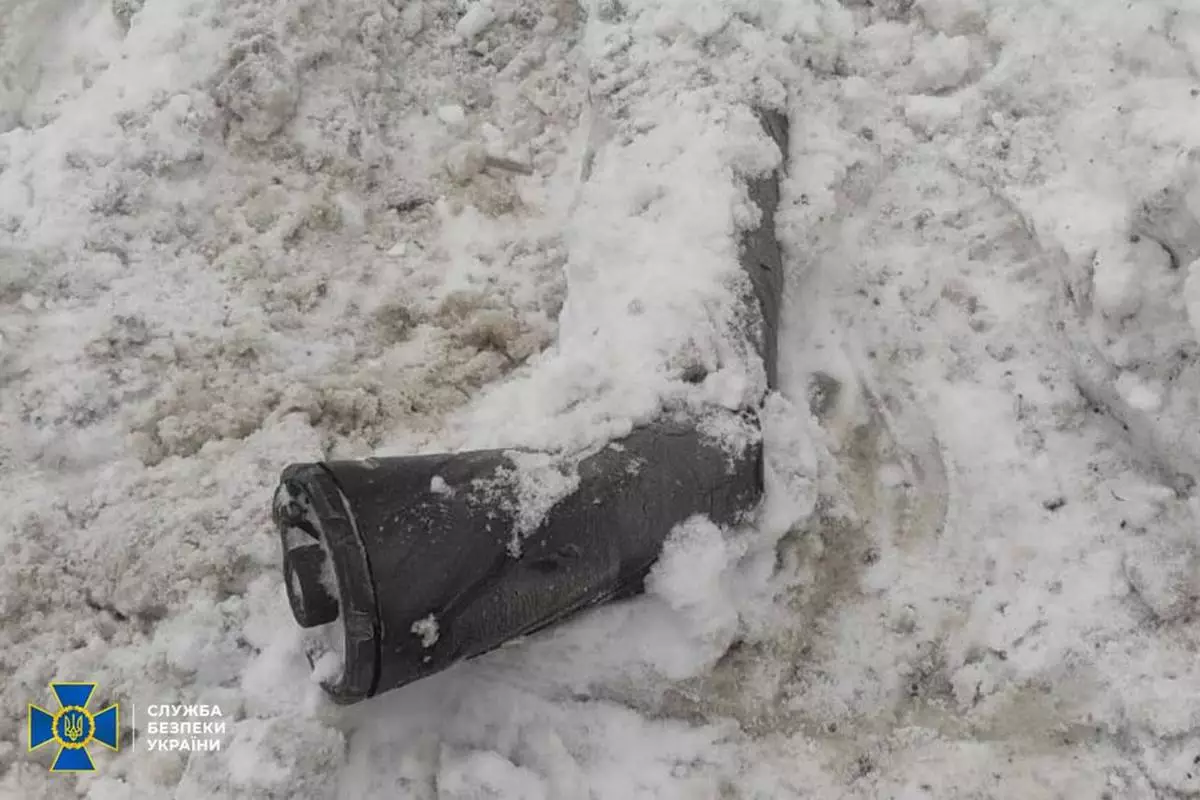PISA, Italy (AP) — Daan Hoole won the individual time trial at the Giro d’Italia on Tuesday for the biggest victory of his career, while Isaac del Toro kept hold of the leader’s pink jersey at the end of the 10th stage.
Hoole made the most of going early, on dry roads, to finish the 28.6-kilometer (18-mile) course from Lucca to Pisa in 32 minutes, 30 seconds. It was the Dutch national time trial champion's first victory in a Grand Tour.
“It’s unbelievable. I mean it didn’t sink in yet,” Hoole said. “I was aiming for this day and I was feeling good all week but to win, I never thought I would do this.”
The 26-year-old Hoole was seven seconds faster than Joshua Tarling, who won the first individual time trial on the second stage of the Giro.
Ethan Hayter was third-quickest to cross the finish line, in front of the Leaning Tower of Pisa, 10 seconds slower than Hoole.
They all completed the course in dry conditions but rain had started falling by the time the bunch of general classification favorites started to set off.
“Of course the GC guys they had rain and that changed a lot but I’m still happy I could beat Tarling in more or less in the same conditions,” Hoole said.
Del Toro managed to stay in pink but saw his lead slashed by UAE Team Emirates XRG teammate Juan Ayuso, who didn't seem hindered by the increasingly wet roads.
Ayuso cut the gap by almost a minute, moving to within 25 seconds of Del Toro — who is the first Mexican cyclist to lead the Giro.
Antonio Tiberi remained third, trimming the gap to 1 minute, 1 second.
“I knew it would be super hard but I tried to finish another day in pink and it was super good,” the 21-year-old Del Toro said. “I knew I have a lot of time on my side and I don’t want to take risks. Then I was struggling to go straight on the bike but it was fun and I’m super happy.”
Pre-race favorite Primoz Roglic recovered from another crash during his recon ride in the morning to leapfrog some of his rivals and move into fifth place in the overall standings, 1:18 behind Del Toro. Simon Yates also made up some ground to move into fourth.
Roglic lost a lot of time after a crash on the white, gravel roads of Sunday’s stage before the rest day on Monday, and started the time trial 10th overall, 2:25 behind Del Toro.
Wednesday’s 11th stage is a 186-kilometer slog that starts on the coast in Viareggio before heading inland and across three high-category climbs to Castelnovo ne’ Monti.
The Giro ends in Rome on June 1.
AP sports: https://apnews.com/sports

Mexico's Isaac Del Toro Romero of UAE Team Emirates Xrg reacts with the leader’s pink jersey after the 10th stage of the Giro d'Italia cycling race, an individual time trial from Lucca to Pisa, Italy, Tuesday, May 20, 2025. (Gian Mattia D'Alberto/LaPresse via AP)

Mexico's Isaac Del Toro pedals as he warms up ahead of the 10th stage of the Giro d'Italia cycling race, an individual time trial from Lucca to Pisa, Italy, Tuesday, May 20, 2025. (Marco Alpozzi/LaPresse via AP)

Slovenia's Primoz Roglic of Red Bull competes during the 10th stage of the Giro d'Italia cycling race, an individual time trial from Lucca to Pisa, Italy, Tuesday, May 20, 2025. (Massimo Paolone/LaPresse via AP)

Dutch rider Daan Hoole pedals past the Pisa's leaning Tower during the 10th stage of the Giro d'Italia cycling race, an individual time trial from Lucca to Pisa, Italy, Tuesday, May 20, 2025. (Marco Alpozzi/LaPresse via AP)

Dutch rider Daan Hoole of Lidl-Trek celebrates on the podium after winning the 10th stage of the Giro d'Italia cycling race, an individual time trial from Lucca to Pisa, Italy, Tuesday, May 20, 2025. (Gian Mattia D'Alberto/LaPresse via AP)
















